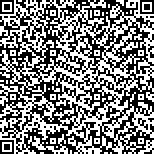|
|
|
| |
|
|
| 本文已被:浏览 839次 下载 3466次 |

码上扫一扫! |
|
|
| 夜光藻配子细胞实时荧光定量PCR检测方法的建立与应用 |
|
张樱馨1,2, 宋书群1,3,4, 李才文1,3,2,4
|
|
1.中国科学院海洋研究所 中国科学院海洋生态与环境科学重点实验室 山东青岛 266071;2.中国科学院大学 北京 100049;3.青岛海洋科学与技术试点国家实验室 海洋生态与环境科学功能实验室 山东青岛 266237;4.中国科学院海洋大科学研究中心 山东青岛 266071
|
|
| 摘要: |
| 夜光藻是我国广泛分布的赤潮原因种之一,其有性繁殖在种群增长中的作用尚不明确,定量分析配子细胞是研究夜光藻有性繁殖过程的重要手段。利用实时荧光定量PCR技术,以夜光藻rRNA基因的18S-ITS1为靶区域,建立了定量检测夜光藻配子细胞的方法。以配子细胞基因组DNA和含目的片段的重组质粒分别建立标准工作曲线,二者均呈现良好的线性响应,检出限分别为每反应0.17个细胞和102个拷贝,满足定量检测应用需求。应用该方法对2015年逐月采集的胶州湾环境样品进行检测,并首次对夜光藻配子细胞的季节变化、水平分布与垂直分布进行了研究。结果表明,调查海域夜光藻配子丰度呈冬末春初、夏季双峰分布,范围为18.12~9.70×105 cells/L;在水深小于10m的湾内近岸站位,配子丰度较低,垂直分布均匀;在湾中心、湾口和湾外的深水站位,配子丰度较高,仅在2~3月、7月和11月出现垂向差异。夜光藻配子细胞对种群增长和存续有潜在的积极意义,其丰度在营养细胞丰度高值期相对较高,在营养细胞丰度极低时仍可普遍检出。丰富了对近岸海域夜光藻配子细胞时空分布的认识,为深入研究夜光藻的种群增长模式、进一步探究其赤潮暴发的内在机理奠定了基础。 |
| 关键词: 夜光藻 有性繁殖 配子 实时荧光定量PCR |
| DOI:10.11693/hyhz20220300067 |
| 分类号:Q943 |
| 基金项目:科技部基础调查专项,2018FY100200号;国家自然科学基金,41606128号,U1706218号。 |
|
| APPLICATION OF QRT-PCR ASSAY IN DETECTION AND QUANTIFICATION OF NOCTILUCA SCINTILLANS GAMETES |
|
ZHANG Ying-Xin1,2, SONG Shu-Qun1,3,4, LI Cai-Wen1,3,2,4
|
|
1.CAS Key Laboratory of Marine Ecology and Environmental Sciences, Institute of Oceanology, Chinese Academy of Sciences, Qingdao 266071, China;2.University of Chinese Academy of Sciences, Beijing 100049, China;3.Marine Ecology and Environmental Science laboratory, Pilot National Laboratory for Marine Science and Technology(Qingdao), Qingdao 266237, China;4.Center for Ocean Mega-Science, Chinese Academy of Sciences, Qingdao 266071, China
|
| Abstract: |
| Sexual reproduction is an important phase of life cycle of Noctiluca scintillans, one of the most common red tide organisms in Chinese coastal waters. The detection and quantification of gametes are vital to clarify the role of sexual reproduction in population growth. However, gametes are nearly absent from field investigation. We developed a qRT-PCR assay using a primer set targeting the 18S-ITS1 of rRNA gene complex of N. scintillans. Genomic DNA of gametes and recombinant plasmids were used as standard samples for the assay with the detection limits of 0.17 cells and 102 copies per reaction, respectively. In addition, the assay was applied to detect environmental DNA samples monthly collected in Jiaozhou Bay in 2015. Results show that the gametes abundance was significantly higher in February, March, and July, in range of (18.12~9.70)×105 cells/L. At nearshores stations (bottom depth < 10 m), gametes abundances were relatively low and distributed evenly in water column. Higher abundances appeared often in the inner bay, mouth bay, and outer bay stations (bottom depth > 10 m), and the vertical distributions were heterogeneous in February-March, July, and November. The temporal variation in gametes abundance was consistent with vegetative cells, and gametes were detectable at very low count or even zero vegetative cells in samples, implying a positive role of N. scintillans gametes on the population growth and sustaining. This study provided insights into N. scintillans gametes in coastal water and enriched our understanding on population dynamics of N. scintillans red tide. |
| Key words: Noctiluca scintillans sexual reproduction gamete qRT-PCR |
|
|
|
|
|
|
